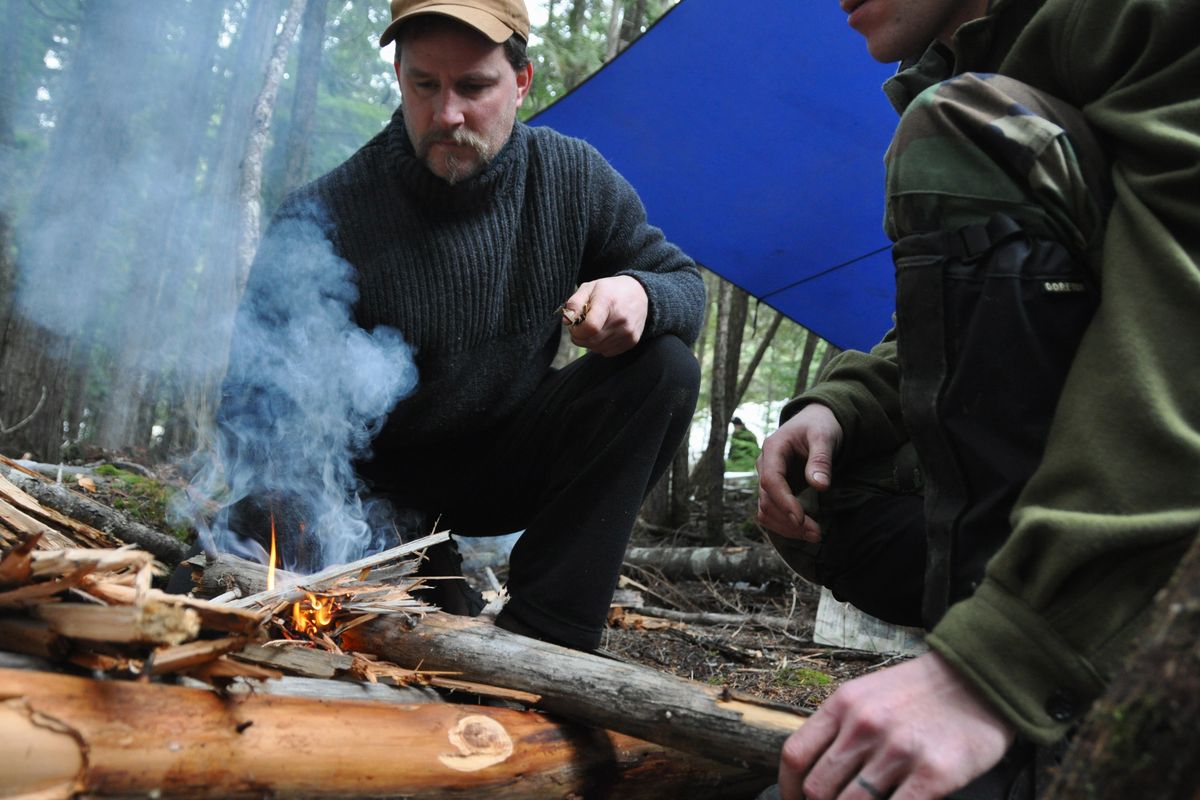Following are 10 sure-fire steps to building a fire in wet conditions:
1. Select a site out of the wind, away from snow-loaded tree limbs, that suits your purpose, whether it’s to provide warmth for a shelter, for signaling or for both.
2. Create a dry environment (perhaps a tarp lean-to) or find some way to shelter you, your fire and the fire fuel from precipitation. A shelter also will hold some of the heat from a fire built at the entrance.
3. Gather fuel of different sizes. Standing dead limbs and timber will be drier than wood off the ground.
4. Prepare the fuel using a knife or hatchet to split and expose dry wood. Make large piles –“three times more than you think you need,” Survival School instructors say – of pencil-size kindling and sticks the size of a thumb, plus piles of larger fuels.
5. A stable platform should be laid to keep the fire off wet ground or from sinking into snow. The base should be about 15-by-15 inches, made from, say, four 4-inch diameter chunks of wood or logs.
6. A cross-piece of wood about 3 inches in diameter should be set across the platform to provide a wind break for the tinder as well as a lift that allows air flow under the kindling when it is stacked over the tinder flames.
7. Make “feather sticks” by forcing a knife down the dry sharp edge of a split length of wood to shave five long curly wisps of wood that are left attached at the base to resemble a hat feather plume. A feather stick made from pitch wood – nature’s gasoline – burns especially well. Make the feather sticks at the last moment before lighting the fire to minimize their absorption of moisture in the air
8. Pile the tinder on the platform against the cross piece; have the feather sticks next to the tinder and all the other sizes of kindling and fuel within easy reach.
9. Ignite the tinder with a match, lighter, magnesium tool or other source and quickly hold a feather stick over the flame, blowing gently with your mouth as necessary until it’s burning.
10. Add fuels gradually, starting with more feather sticks, then pencil-size kindling and then thumb-size kindling in a cross-hatch pattern to allow good air flow. Build a good base of burning wood before adding larger fuels.
